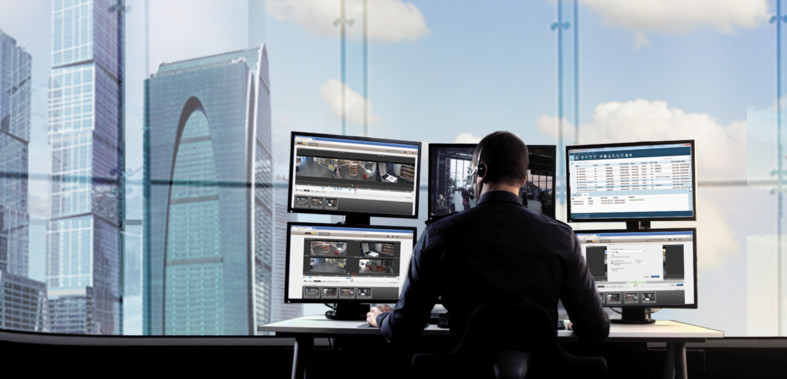Using video surveillance to reduce retail shrinkage
With competition from online retailers and changes to in-store shopping habits, securing profit margin is becoming more important than ever. Loss of inventory through theft – either by employees or customers – can represent a significant challenge to retailers. In fact, European retailers lose roughly €49bn a year from shrinkage, while in the US this figure sits at about $61bn. This not only highlights the financial damage directly, but demonstrates a further widening of the chasm between online and in-store commerce.
Effective solutions start with human behavior
Addressing the ongoing challenges around shrinkage must start with the knowledge of human behavior and the different motivations for theft. Using these insights, retailers can make intelligent decision about the type and design of security solutions needed. Video surveillance is the most deployed form of physical loss prevention technology and is used to monitor for abnormal and suspicious behavior. It is important to note, however, that anecdotal evidence suggests that the effectiveness of CCTV as a deterrent appears to be waning. For this reason, there is a move to integrate more intelligence into the solution.
Starting with the basics, it’s important to make sure that the surveillance system is as effective as possible. Comprehensive coverage of a store is key, particularly in areas of high risk: the point of sale (POS) and exits. Once these fundamentals are covered, using suitably high definition cameras supported by the implementation of video analytics technology, can provide an invaluable tool for reducing shrinkage.
Direction detection proves valuable
Video-based people counting is an established solution in retail, but generally not standard in food retail as customers rarely enter without a buying intent and conversion rate is almost total. Many food retailers measure number of receipts as an indication of number of visitors. Food retailers have, however, discovered that a real issue exists in customers exiting through the entrance gates – an indicator of suspicious behavior and potentially pointing towards incidences of shoplifting.
One way of proactively counteracting this issue is with direction detection technology. In addition to tracking visitor numbers, analytics featuring direction detection can trigger an alarm when a person tries to exit in an undesired direction – for example through the entrance gates. This the detection can be enhanced by for example, a flashing light or sound notification altering staff or guards that there is reason to suspect foul play.
Random screening selection protects against internal theft
High-ticket specialty stores and large distribution centers typically experience large inventory losses. One factor at play is internal theft. While employee theft is a major component of retail shrinkage, it is globally an area in loss prevention that typically may not be as much of a focus as customer theft.
Unfortunately, there are many strategies which employees can use to misappropriate goods: the consumption of consumables, removing cash from tills, sneaking goods out the back door and ‘sweet-hearting’ – where staff members, in collusion with customers, can facilitate theft at the POS. Many of these offences have one thing in common: they take place in areas that lack proper video surveillance, such as in staff-only areas.
In addition to increases the surveillance coverage in the store where appropriate, one of the best strategies retailers can use to reduce employee theft is with spot staff inspections. However, if this strategy is not carried out carefully, employers run the risk of damaging staff morale. With the use of an especially enhanced people counting analytics, these spot checks can be efficiently, systematically carried out without allegations of unfairly targeting certain members of staff. Such analytics systems are customizable – the selection percentage can be adjusted, and it is possible to decide how to alert security personal when a check is due. The random selector technology is well suited to both exits and self-checkouts.
Advanced video analytics prove valuable at high risk areas
Both employees and customers can use different methods for removing items from stores without paying for them. Certain areas are high risk, especially at the POS – both manned and unmanned. Video analytics can help protect against theft by carrying out automatic shopping basket analysis to identify items that have entered the basket, but not been paid for. There is also the possibility of using clever algorithms to detect incidents at self-service checkouts where shoppers avoid scanning items. These types of solution are rapidly gaining traction with loss prevention professionals in retail.
While video is still the most utilized form of physical loss prevention technology, taking an integrated approach will yield the greatest rewards. For example, combining effective POS video surveillance with exemption-based reporting – analyzing transactions and picking out abnormal behavior – and electronic article surveillance (EAS) is an incredibly effective deterrent.
As retail continues to change and evolve, loss prevention professionals must adapt as well. By taking advantage of all the modern technology available there is huge scope for reducing shrinkage. Video surveillance in retail outlets is already very widespread and as the investment in hardware has already been made, it makes good sense to maximise this with the clever use of video analytics – which come in at a comparatively low price point, particularly when stacked up next to the potential gains to be made in reducing shrinkage. In this way, retailers can make the most of the technology available to them, without further reducing their profit margins.
Download our guide to learn how Axis video surveillance and connected technology helps bring in customers and keep out crime.



